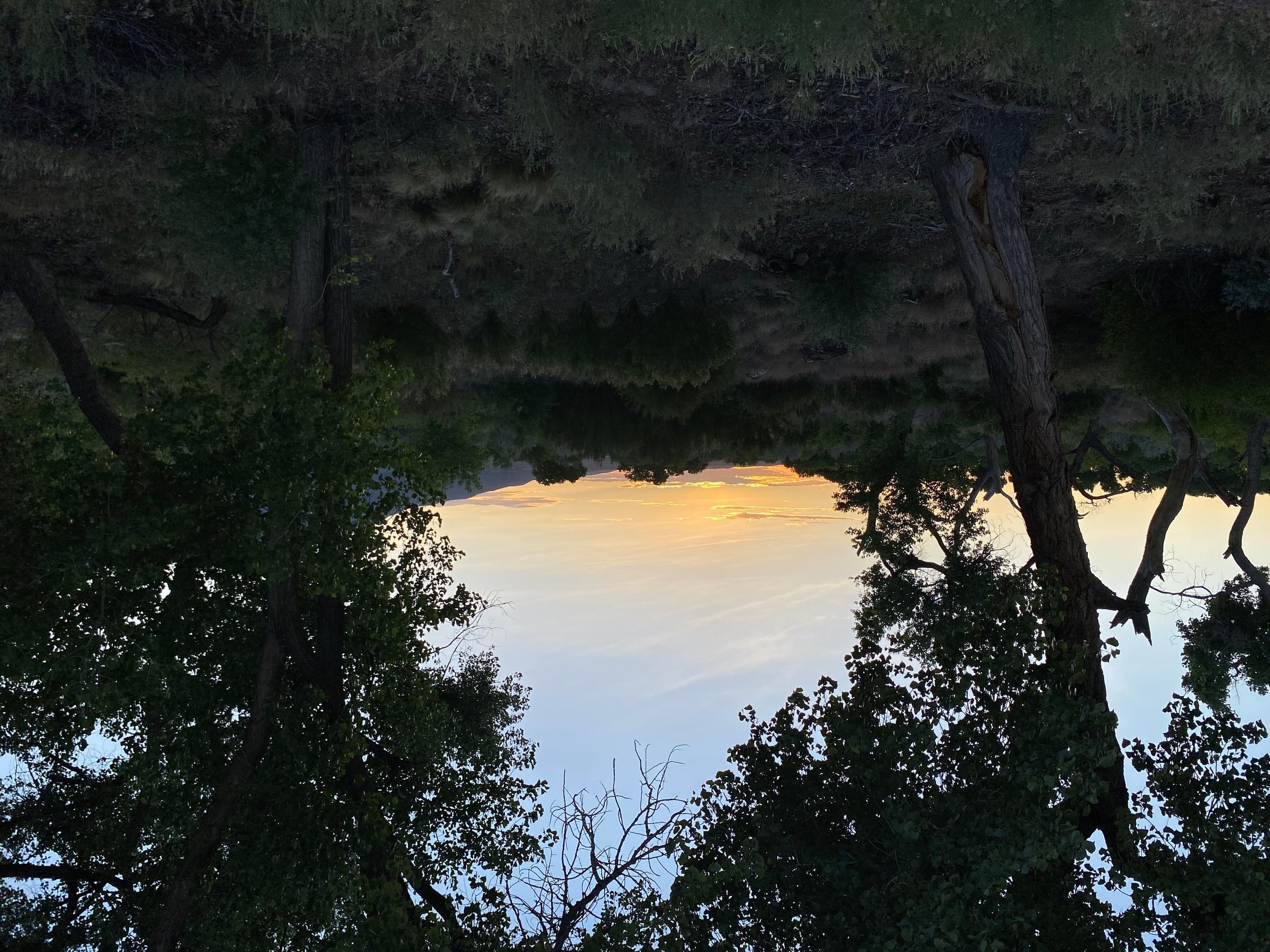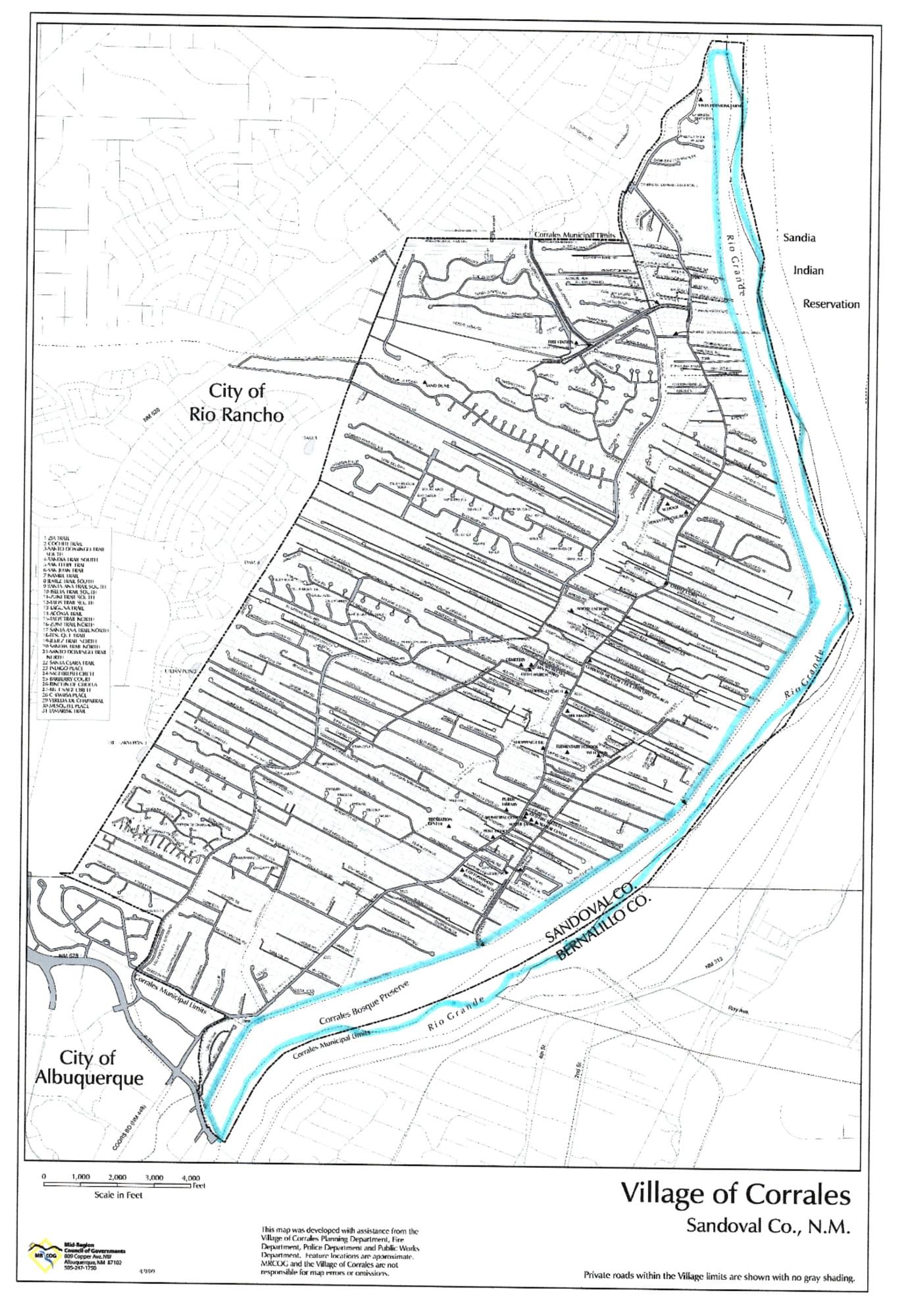Corrales Bosque--Romero Rd. Entrance

Corrales Bosque--Romero Rd. Entrance
Corrales, New Mexico 87048
Corrales Bosque Official WebsiteCorrales Bosque Preserve webpage
Corrales Bosque Preserve brochure
Tips for Birding
There are lots of trails to choose from, but a great place to start, especially in migration seasons, is the flat, gravelly (sometimes sandy) lower levee trail. The levee has a bike trail on top and another trail on the lower level. The lower level is right along the Corrales Riverside Drain or "clear ditch", which has a great understory and canopy habitat and a steady flow of water in the spring, summer, and early fall months, and is great for migrants and breeders. The area is popular with sparrows and finches in the winter months as well. Additionally, the single-track trail that runs through the bosque is a great place to walk. If you go south, the bosque is thicker and more lush. There is a second river view a few hundred yards south. Go north, and you hit the burned area, where the bosque is very open with few trees. This area is good for sparrows and raptors (sparrows in the brushy understory, raptors in dead snags). Walking north for about 0.2 miles, you'll come to a massive open area. This is the Harvey Jones Channel. There are a number of small channels running from a large pipe, which create a wetland area and have brushy vegetation along their sides. They are always full as this is treated wastewater headed for the Rio Grande. There is another channel, sort of separate from the others, that runs south of Harvey Jones along the river. This one is great for Winter Wrens and other understory-loving species.
Birds of Interest
Winter: Great waterfowl variety, including Mallard, Gadwall, American Wigeon, Canada, Cackling, Snow, and Greater White-fronted Geese (the latter two being much less common), and diving ducks such as Common Merganser and Common Goldeneye. Sparrows are good as well. Large flocks of White-crowned Sparrows often have a White-throated hanging out with them, and Song and Lincoln's Sparrows love the riverside drain. Summer: Yellow-breasted Chat, Summer Tanager, Blue Grosbeak, Bullock's Oriole, Lucy's Warbler, Lazuli Bunting, Western Wood-pewee, etc. Spring and fall can be really birdy, with tons of warblers, tanagers, and vireos moving through. Generally, inside the bosque is better in spring and the riverside drain is more productive in fall, but both areas are good to visit in both seasons.
About Corrales Bosque
See all hotspots at Corrales Bosque
The Corrales Bosque Preserve consists of a narrow strip of land containing a natural cottonwood forest and associated riparian habitats that include shrubs such as coyote willow and New Mexico olive. The Preserve runs west from the Rio Grande to 1) north of Coroval Road, the west side of the Sandoval lateral irrigation ditch, and 2) south of Coroval Road, the west side of the Corrales Riverside Drain (“clear ditch”). Additional boundaries of the Preserve are south at the Alameda Bridge and north at Siphon Road.
In 1978 the Corrales Bosque Preserve was declared a protected area. The Village of Corrales oversees the Preserve to maintain it as a Natural Area and Wildlife Preserve.
Riparian habitats are particularly important for avian communities in the arid Southwest. As such, the Preserve was designated as an Important Bird Area (IBA) in 2013. Many bird species nest in this area and the endangered Southwestern Willow Flycatcher and the Western Yellow-billed Cuckoo, a species of conservation concern, have been observed in the bosque habitats. The Preserve is also an important stopover habitat for many migrants that pass through on their ways south and north, and it provides habitat for wintering Bald Eagles.
Corrales Bosque Important Bird Area is located on the west side of the Rio Grande within the limits of the Village of Corrales. Corrales Bosque Preserve is a narrow strip of relatively natural riparian habitat bounded by the Corrales Siphon on the north, the Alameda Boulevard bridge on the south, the western low water line of the Rio Grande on the east, and on the west by the Sandoval Lateral Canal and the Corrales Riverside Drain. The Corrales Riverside Drain (known as the Clear Ditch) runs the entire length of the Preserve.
Parking is available at the south end (Alameda bridge) and north end (Siphon Road). Limited parking is available at Romero Road. Be courteous to residents and do not block gates and driveways, and do not block access points for the Fire and Police Departments.
Notable Trails
Bosque Trail, Levee Trail
Features
Wheelchair accessible trail
Restrooms on site
Entrance fee
Roadside viewing
Content from Corrales Bosque Official Website, Corrales Bosque Preserve webpage, and Owen Sinkus
Last updated May 16, 2023
